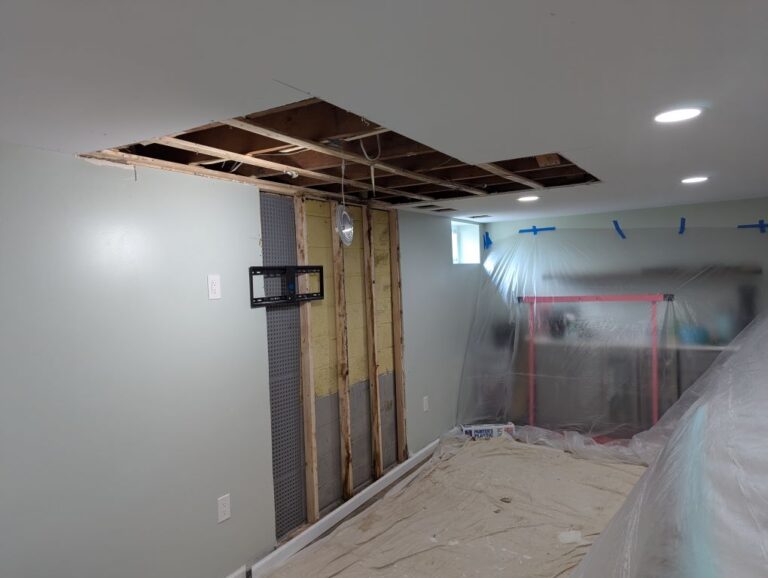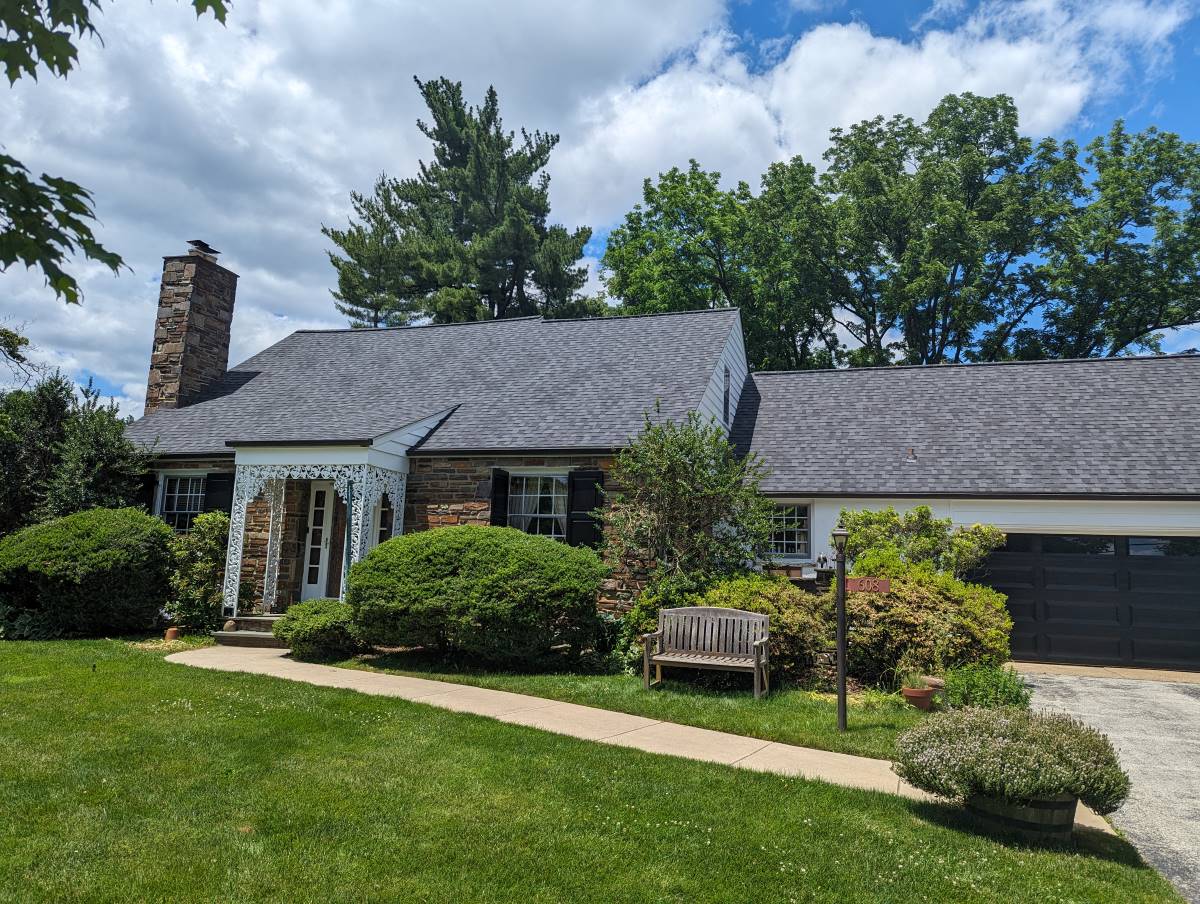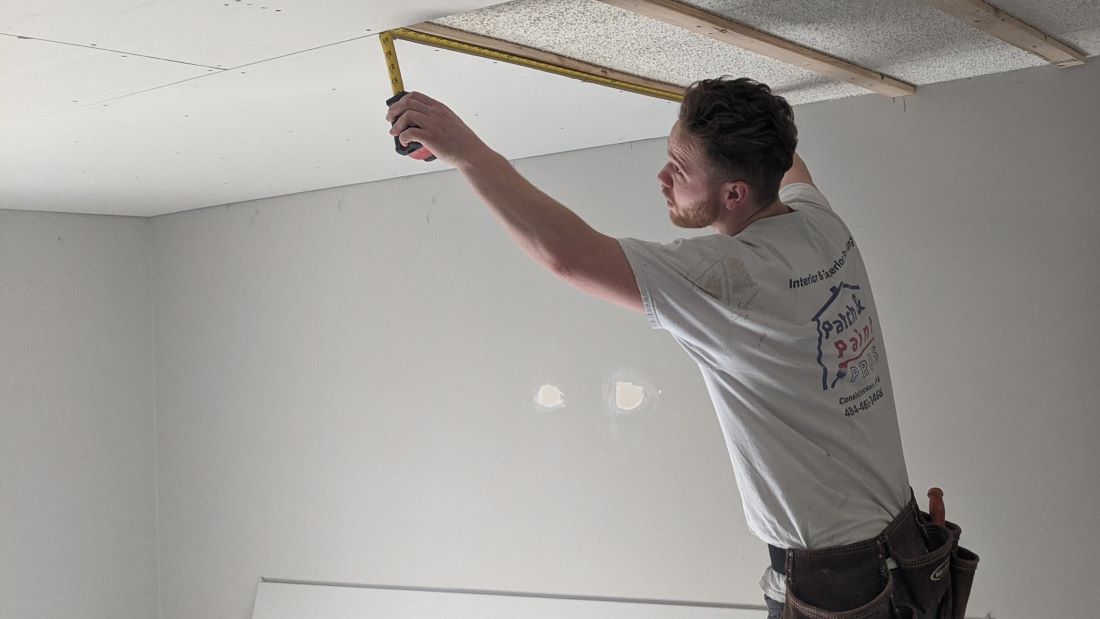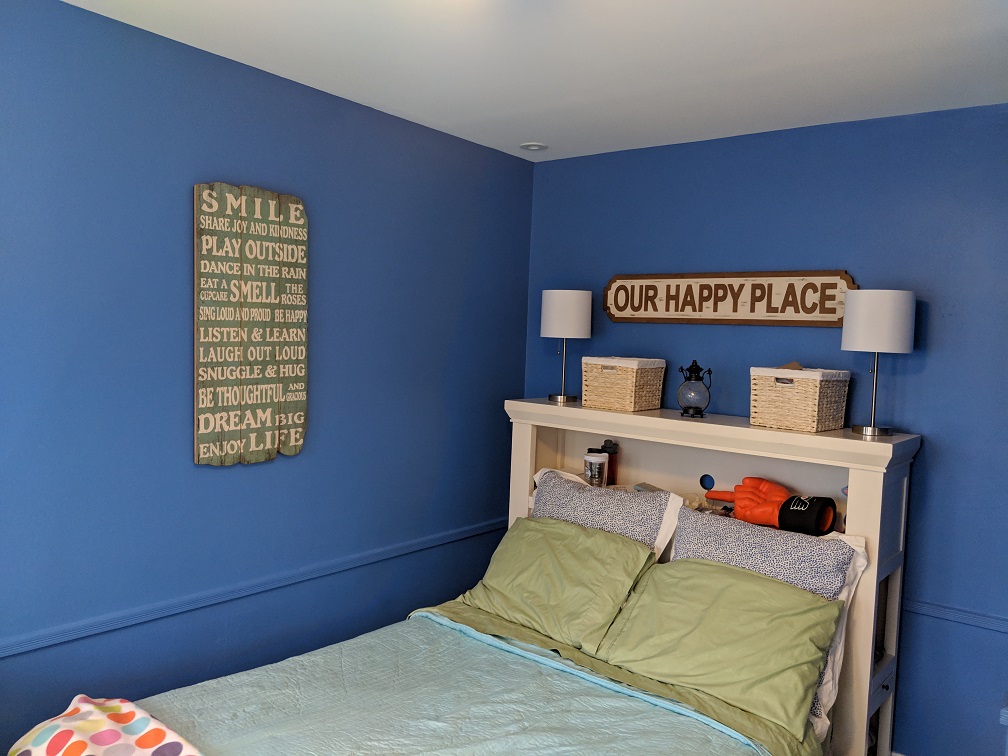Ceilings are an essential part of any building, and damage to them can be a major source of concern for homeowners. Luckily, there are many common causes of ceiling damage that can be easily identified and repaired with professional ceiling repair services.
Need Ceiling Drywall Repaired Fast?
Patch and Paint Pros offers expert ceiling drywall repair in Conshohocken and the surrounding Montgomery, Delaware and Chester County areas. Whether it’s from water damage or impact, we’ll make it look like it never happened.
📞 Call Now or 📩 Request a Free Estimate
In this article, we’ll explore some of the most common culprits behind ceiling damage and offer advice on how to address them. From water leaks to pest infestations, we’ll cover everything you need to know to get your ceilings looking as good as new. Keep reading to learn more about these five common causes of ceiling damage.
Common Causes of Ceiling Damage Overview
Water Leaks
Ceiling water damage can be caused by water leaks, which often result in unsightly water stains on the surface. Faulty plumbing, roof damage, or clogged gutters are common sources of water leaks that can cause significant damage to the ceiling. Before starting any repairs, it is crucial to identify the water source and address the underlying issue to prevent further damage and costly repairs in the future.
To repair the ceiling damage caused by water, it’s important to ensure that the area is completely dry and free from moisture. Small holes and water stains can be patched up using joint compound or paint.
However, if the damage is severe due to prolonged exposure to moisture, larger sections of the plasterboard may need to be replaced.
After repairing the visible signs of water damage, other forms of ceiling damage, such as those caused by roof problems or wear and tear, can be addressed. It’s essential to fix any underlying issues to prevent water leaks from causing more damage in the future, such as a broken pipe.
Roof Damage
Roof damage can be caused by a variety of factors, from age to weather. Common causes include inadequate shingles or flashing, improper attic ventilation, and missing roof sealant.
The best way to repair any type of roof damage depends on the specific cause; however, many repairs involve replacing damaged materials with new ones and ensuring proper installation techniques are used.
When it comes to repairing roof damage, timely action is key in order to prevent further issues such as mold growth or structural instability. In some cases, homeowners may also need to hire a professional contractor if they lack the necessary experience or tools for the job.
To ensure that their roof remains in good condition going forward, homeowners should inspect their roofs regularly and make any needed repairs right away. With this proactive approach, homeowners can save themselves time and money in the long run.
As we move ahead into our next section about poor ventilation, it’s important to understand how insufficient airflow through an attic space can create problems with your home’s structure and integrity.
Poor Ventilation
Let’s explore the causes and symptoms of poor ventilation, so we can be better informed when it comes to repairing any damage it may have caused to our ceilings. We’ll also look into how to repair the damage, so we can keep our ceilings in good condition.
Causes Of Poor Ventilation
Poor ventilation can be one of the leading causes of ceiling damage. Without proper airflow, condensation, and moisture builds up in your attic or crawlspace which can cause mold growth and rotting drywall.
Not only that, but it also creates an ideal environment for pests like rodents and insects to thrive, further damaging ceilings and walls alike. Poor insulation in these areas as well as clogged vents and ducts can contribute to this problem, so make sure you inspect regularly for signs of inadequate air circulation. Taking steps now will save you from costly repairs down the road!
Symptoms Of Poor Ventilation
Symptoms of poor ventilation can be quite obvious. If you notice lingering musty smells, mold and mildew forming on walls or furniture, condensation on windows and other surfaces, increased humidity levels in your home, or unexplained spikes in energy bills then these are all signs that you may have a ventilation problem.
You should also check to see if any vents or ducts are blocked by debris or dirt as this could cause airflow problems.
Taking action now is key to avoiding more serious issues down the line, so make sure to inspect your home’s ventilation regularly!
Pest Infestations
An alarming statistic to consider is that nearly 17% of all homeowner’s insurance claims for damage to ceilings were due to pest infestations.
This type of ceiling damage can have many causes, including the following:
- Rodent or bird nests in attics and walls
- Termites eating away at wood beams
- Mice chewing on wires in the attic or roof area
- Wasps building their nest in an attic space
Repairing this kind of damage often involves removing any existing pests from the premises and sealing up any gaps or holes they may have created. In addition, depending on the severity of the problem, homeowners may need to replace damaged boards or insulation.
After completing repairs, it’s important to take preventative steps such as installing insect screens over vents and chimneys, using pesticides if necessary, and storing food items in containers with tight lids.
Structural Issues
Structural issues in a ceiling can often be the cause of damage. This is especially true for older homes and buildings, where age and wear and tear have taken their toll on the structure.
Common structural problems include bulging or sagging ceilings, weak beams, cracked joists, broken rafters, and water damage due to leaking pipes or roofs.
To fix these kinds of damages, you may need to replace certain parts of your ceiling’s structure with new ones or reinforce existing elements by adding additional support beams. In either case, it is best to hire an experienced contractor who has experience dealing with this kind of repair work.
If left unfixed, structural issues could eventually lead to more serious damage that would require extensive – and expensive – repairs.
Final Thoughts
Damage to the ceiling can be a real hassle, but it doesn’t have to take over your life. With some simple repairs and prevention techniques, you’ll be able to keep your ceilings looking their best.
It’s ironic that something so essential to our homes is often overlooked until there’s an issue. But with these five common causes of ceiling damage in mind, you’re better equipped to tackle any problems that come up – before they become too costly or time-consuming for you!
Still Need Help with a Ceiling Repair and Painting?
Patch and Paint Pros offers expert ceiling repair and painting services in Conshohocken and the surrounding Montgomery, Delaware and Chester County areas. Whether it’s from water damage or impact, we’ll make it look like it never happened.
📞 Call Now or 📩 Request a Free Estimate












